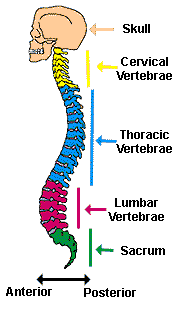BACKGROUND:The impact of new asymptomatic spinal cord lesions (a-SL) in multiple sclerosis (MS) course is poorly characterized.
OBJECTIVE:The objective of this research paper is to assess the prognostic value of a-SL in predicting MS course.
METHODS:Relapsing-remitting MS patients who received serial MRI (brain and spinal) at baseline (t1) and within 12 to 36 months (t2) during clinical stability, and had a follow-up (t2-t3) ⩾24 months were included. Relapses and disability progression were evaluated between t2 and t3.
RESULTS:Of 413 consecutive screened MS patients, 103 patients (65 females, median age 43 years) were included. After a median t1-t2 interval of 17 (IQR 13-26) months, 25.2% and 43.7% patients had ⩾1 new a-SL (a-SL+) and asymptomatic brain lesions (a-BL+), respectively. Relapse risk between t2 and t3 (median interval: 42 (IQR 32-57.5) months) was significantly increased in a-SL+ and/or a-BL+ vs a-BL- and a-SL- (HR = 2.31, 95% CI = 1.13-4.72, p = 0.02). No differences in the risk of disability progression were found in a-SL+ and/or a-BL+ vs a-SL- and a-BL-.
CONCLUSION: a-SL occur in one-quarter of clinically stable RRMS, and combined with a-BL contribute significantly in predicting future disease course.
OBJECTIVE:The objective of this research paper is to assess the prognostic value of a-SL in predicting MS course.
METHODS:Relapsing-remitting MS patients who received serial MRI (brain and spinal) at baseline (t1) and within 12 to 36 months (t2) during clinical stability, and had a follow-up (t2-t3) ⩾24 months were included. Relapses and disability progression were evaluated between t2 and t3.
RESULTS:Of 413 consecutive screened MS patients, 103 patients (65 females, median age 43 years) were included. After a median t1-t2 interval of 17 (IQR 13-26) months, 25.2% and 43.7% patients had ⩾1 new a-SL (a-SL+) and asymptomatic brain lesions (a-BL+), respectively. Relapse risk between t2 and t3 (median interval: 42 (IQR 32-57.5) months) was significantly increased in a-SL+ and/or a-BL+ vs a-BL- and a-SL- (HR = 2.31, 95% CI = 1.13-4.72, p = 0.02). No differences in the risk of disability progression were found in a-SL+ and/or a-BL+ vs a-SL- and a-BL-.
CONCLUSION: a-SL occur in one-quarter of clinically stable RRMS, and combined with a-BL contribute significantly in predicting future disease course.
As many as 85% of brain lesions are silent and likewise silent spinal cord lesions develop but with time these create more and more damage in nerve tracts and are best not to have them.
